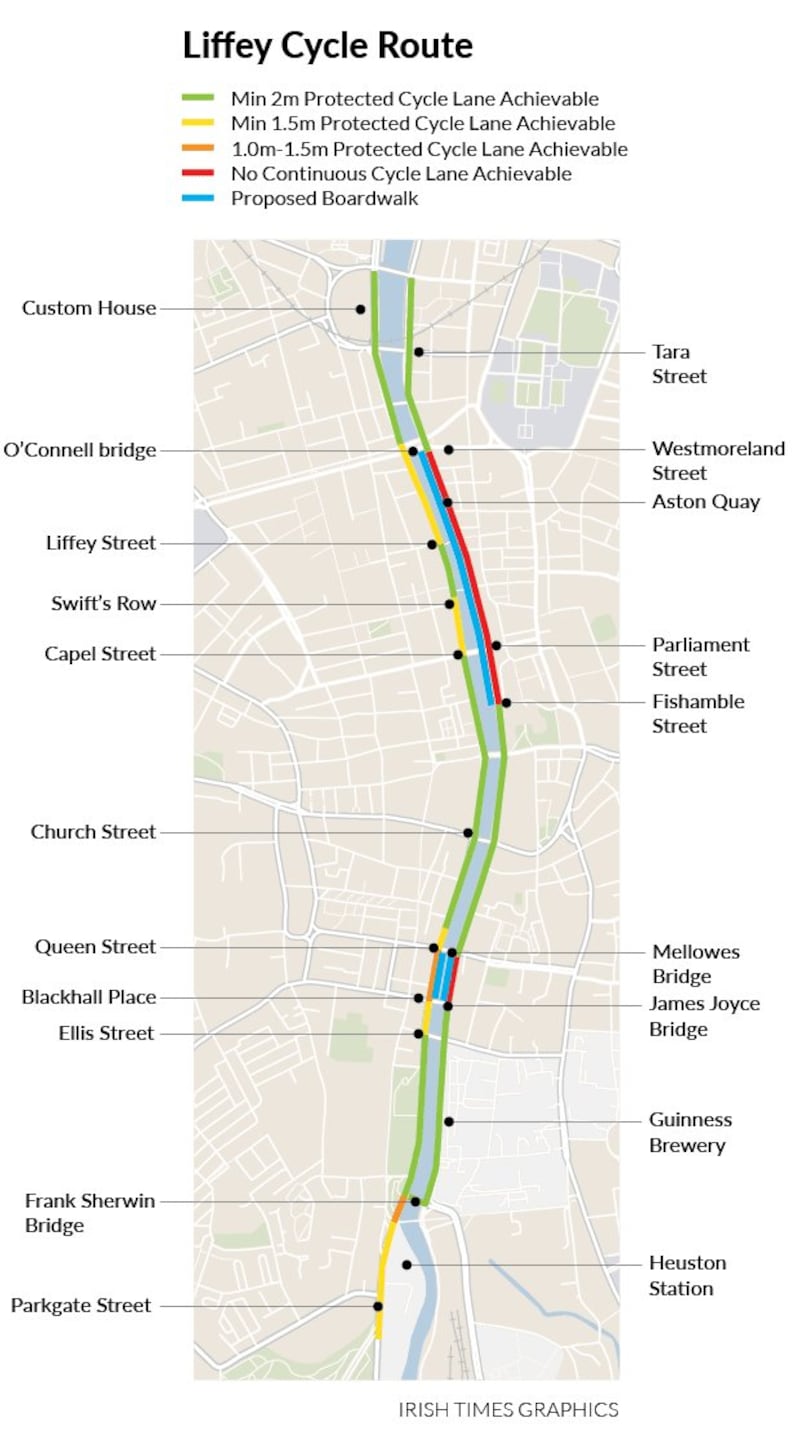The long-awaited Liffey cycle route, with a dedicated path for cyclists for much of Dublin's north and south quays, will be in place by August, Dublin City Council has confirmed.
Traffic lanes will be removed and parking eliminated along parts of the quays and the space will be reallocated to cyclists.
However, while the cycle lane will be continuous on the north side of the river, the council said it has not been possible to achieve this on all of the south quays, with the section from O’Connell Bridge to Fishamble Street to be left without a dedicated cycle lane until 2024.
The route for the 5km path along the river Liffey in Dublin was finally selected by the National Transport Authority (NTA) last April, seven years since planning for the project began.
However, it emerged later last year the route would not be completed until 2024, at the earliest. In response to the delay, cycling campaigners last month held a protest along the river and set up a petition calling for the council to trial a two-way cycle path on the north quays only.
The council now says that instead of undertaking a short term trial it will immediately implement as much of the NTA’s planned route as possible, and keep this interim scheme in place until the permanent scheme is implemented.
The full NTA route - from the Phoenix Park in the west to the Tom Clarke Bridge near the 3 Arena in the east - was expected to cost more than €20 million largely due to the engineering work required on the sections of the quays where there is not enough road space for separate lanes for cars, buses and cyclists.
This work would include “major interventions to quay walls and bridges presenting significant challenges,” the council said, particularly where boardwalks were required.
The interim scheme, which will be progressed in phases from now until August, will concentrate on the section between the Phoenix Park and the Custom House. Segregated paths are already in place between the Custom House and the Tom Clarke Bridge.
The council plans to spend €800,000 on the interim works, which will largely involve re-allocating existing road space to cyclists using lane separators, known as “orcas” along with vertical flexible “wands”.

There will be no major alteration of bus stops and no reduction in footpath widths, car traffic will not be removed from any section of the quays, and access to car parks will be maintained. However, the number of general traffic lanes will be reduced, and on-street parking, loading bays and taxi ranks will be removed.
Where there is only one general traffic lane, the council has decided it was “not feasible” to remove it. This means that on the southside, Aston Quay, Crampton Quay, Wellington Quay, Essex Quay and Ushers Island will not have segregated lanes.
However, segregation will be in place over the rest of the length. In most cases the cycle lanes will be two metres wide, with four areas on the northside at 1.5 metres and two at one metre wide. Councillors will be asked to approve the plans on Monday.














